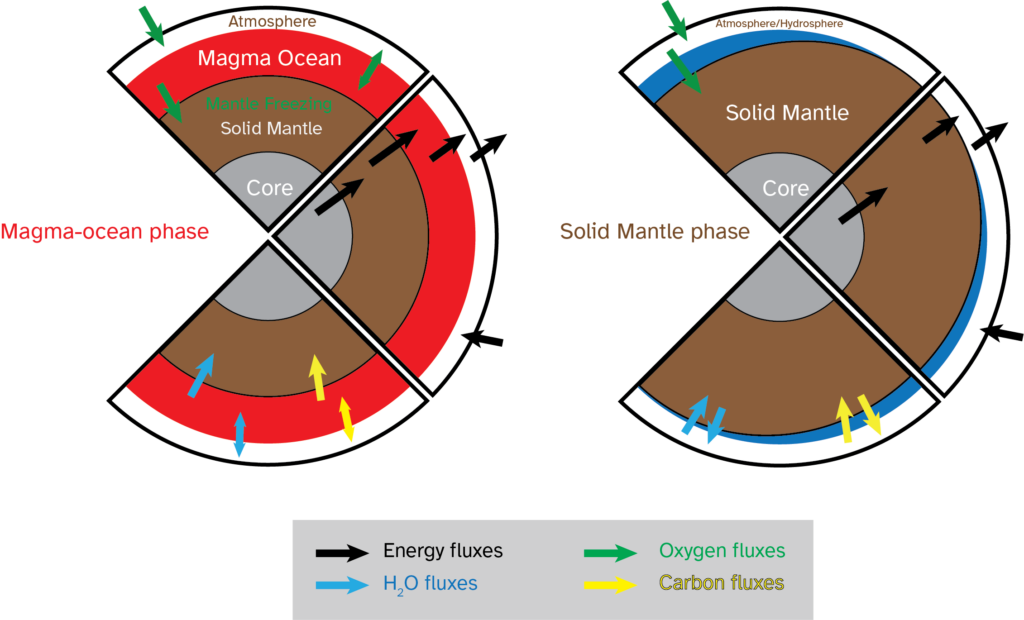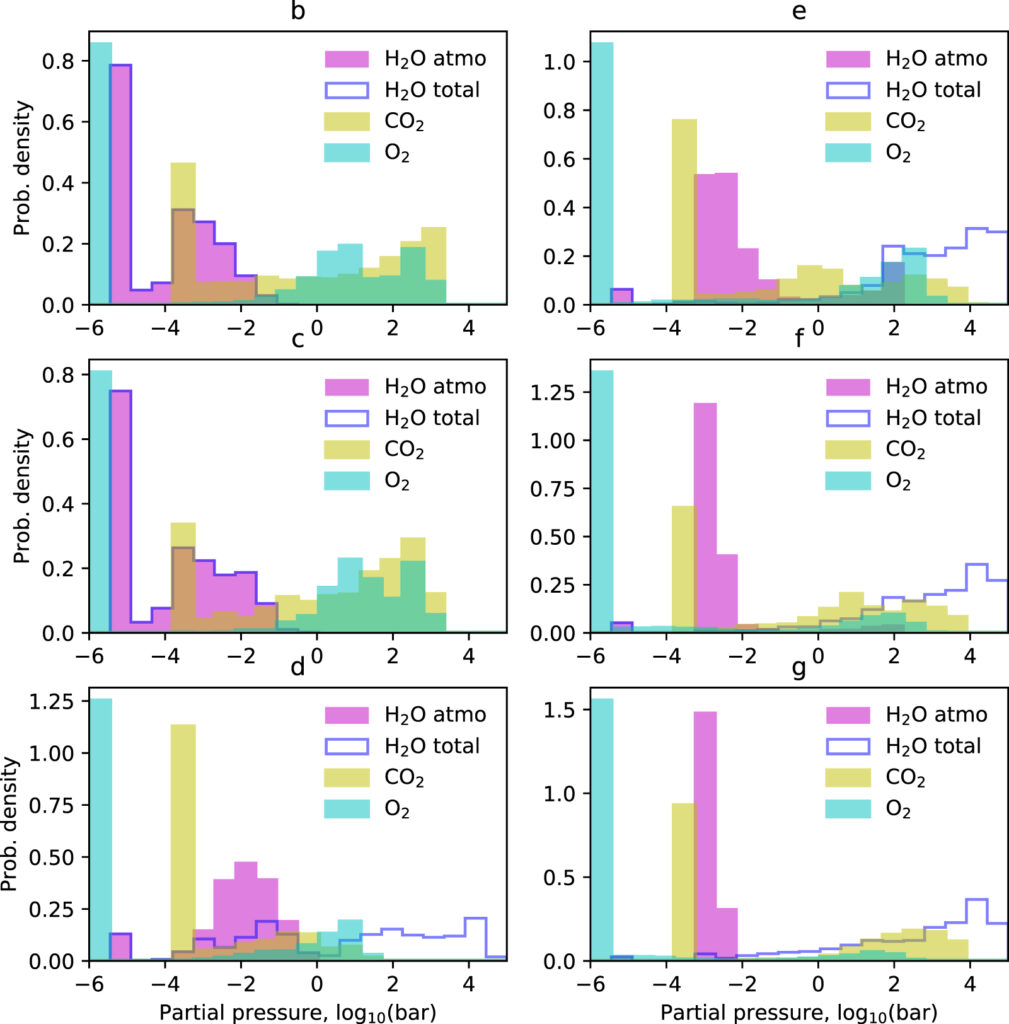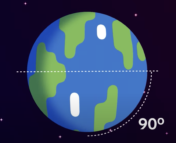Title: Predictions for Observable Atmospheres of Trappist-1 Planets from a Fully Coupled Atmosphere-Interior Evolution Model
Authors: Joshua Krissansen-Totton and Jonathan J. Fortney
First Author’s Institution: Department of Astronomy and Astrophysics, University of California, Santa Cruz, Santa Cruz, California, USA
Status: Published in The Astrophysical Journal [open access]
The TRAPPIST-1 system presents us with a unique opportunity to study multiple Earth-sized planets around another star. The system is of particular interest to astrobiologists because it has seven planets with several of them within the habitable zone of their star. Recently, JWST observed the TRAPPIST-1 planets with the goal of characterizing their atmospheres by measuring their spectra. But is it possible to predict what JWST will see beforehand? The authors of today’s paper use an atmosphere-interior evolution model to give us insight on what the atmosphere of the TRAPPIST-1 planets may be made of.
Previous studies have looked at some of the TRAPPIST-1 planets with the Hubble Space Telescope (HST) and determined that some of the planets are indeed terrestrial and could be potentially habitable. Using this information, the authors see it as an opportune moment to explore how rocky planets could evolve over time and more specifically, how their interiors can influence the atmospheric composition of these planets and therefore our atmospheric observations with current telescopes. What can these evolution models tell us about the modern atmospheric composition of these planets?
Connecting the Dots with PACMAN
While it may sound counterintuitive, the interior of a planet can interact with planetary atmospheres. How? Planets can eject material and gas from the interior of a planet, often volatiles, through the process called outgassing or degassing (see figure 1). To illustrate this, think of a scented candle. When you light the candle, slowly the room will start smelling like the scent advertised on your candle. As the candle wick warms, it melts the wax, which in turn releases the scent. The air is now interacting with the scent coming off from your candle. While the heat mechanism of outgassing is different than a candle, the interaction of the resulting gas with the air is similar. Volatiles are dissolved and incorporated into the planet’s mantle, which can then lower the melting temperature of the mantle rock causing it to melt and rise to the surface. At the surface, the dissolved volatiles are released in gaseous form and can impact the atmospheric composition of a planet.

The authors model this interaction over the planetary system’s lifetime in order to predict what the resulting atmospheres would be like. For this, they use the Planetary Atmosphere, Crust, and MANtle (PACMAN) evolution model. Just like the game PACMAN, they try to collect all the Pac-Dots, meaning they try to understand and model as many important geochemical and geophysical processes as they can to get a realistic picture of the current state of the TRAPPIST-1 atmospheres (see figure 2). This model has been validated for both Earth and Venus in the past.

“What’s Going On in the Inside Shows on the Outside” – Earl Nightingale
By using PACMAN, the authors give some predictions of what the atmospheres of the TRAPPIST-1 planets could be composed of in the case they do have atmospheres. One of their predictions is that they determined that atmospheres containing abiotic oxygen are less likely to occur as the distance from the star increases (see figure 3). Therefore, TRAPPIST-1 b and c are more likely to accumulate oxygen than TRAPPIST-1 e, f and g. However, the authors point out it would be “unsurprising” if the inner planets didn’t have atmospheres as half of their model runs showed that these planets didn’t have a dense atmosphere after 8 billion years, the estimated age of the system.
If somehow the TRAPPIST-1 planets did have atmospheres, according to the PACMAN model, their atmospheres are likely to be mainly composed of CO2, CO2-O2 or CO-O2 in the case that there is significant photochemical dissociation, which is the breakdown of molecules as a result of interactions with photons (see figure 3). The difference in CO2 abundance will depend on initial concentrations as well as on geochemical cycles and atmospheric escape occurring on the planets.

The PACMAN model is an exciting step towards connecting internal geological processes to atmosphere observations made with telescopes such as JWST. These predictions can be used to compare with atmosphere observations and motivates further development of these models for a complete characterization of exoplanets.
Astrobite edited by Lucas Brown and Macy Huston
Featured image credit: NASA/JPL-Caltech




